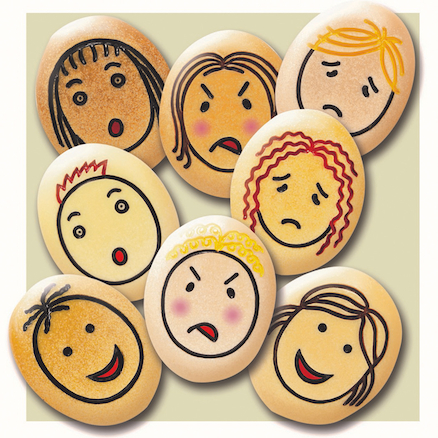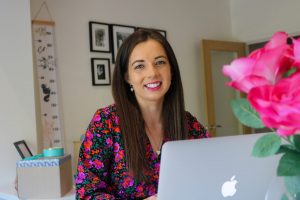In her 6 part blog series, Ruth Lue-Quee, Education & Inclusion Expert, explores and offers practical advice on how to create a mentally healthy classroom.
This blog is part of a 6-part series. To find where you left off head on over to our wellbeing blog page.
Introduction
Everybody knows how to look after their physical health, but looking after our mental health is just as important. As educators, protecting our own mental health and creating a mentally healthy culture for our pupils is paramount to ensuring everyone can thrive. As we can’t always see our mental health in the way we can our physical health, talking about it with our children is imperative, encouraging them to identify their feelings, normalising expressing our emotions and recognising how our bodies and minds are feeling. By doing this, we can help to empower young people to take control of their own mental health needs.
As a school or setting there should be a clear policy on the promotion of positive mental health and emotional well-being. In addition to this, the SEND Code of Practice, 2015 makes clear that schools and colleges should have clear processes to support children and young people in relation to their social, emotional and mental health.
Creating a mentally healthy school culture is indeed a job for the whole school community, however as an individual teacher you can create your own mentally healthy classroom.
 In these 6 articles, I’m going to share a variety of practical ideas, activities, theories, advice and resources which will support you to do exactly this and create a mentally healthy classroom.
In these 6 articles, I’m going to share a variety of practical ideas, activities, theories, advice and resources which will support you to do exactly this and create a mentally healthy classroom.
What is mental health?
- Mental health includes our emotional, psychological and social well-being.
- Our mental health affects how we think, feel, act and behave.
- Our mental health helps determine how we deal with different situations and scenarios, manage stress, relate to others and make choices.
- Our mental health can impact us from childhood through to adulthood and can manifest itself in many ways.
- Many factors can impact our mental health such as biological factors, life experiences, traumas, family history, environmental factors and more.
- Everybody has mental health, just how everybody has physical health. Therefore, we need to support ourselves and our pupils to be mentally healthy, just as we support and educate them to be physically healthy.
Did you know?
- One in six children aged five to 16 were identified as having a probable mental health problem in July 2021. This is a huge increase from one in nine in 2017. That’s five children in every classroom.
- One-third of mental health problems in adulthood are directly connected to an adverse childhood experience (ACE).
- Less than 1 in 3 children and young people with a diagnosable mental health condition get access to NHS care and treatment.
- Suicide was the leading cause of death for males and females aged between 5 to 34 in 2019.
(All stats taken from: youngminds.org.uk //www.youngminds.org.uk/about-us/media-centre/mental-health-statistics/)

What is a mentally healthy classroom?
- Being mentally healthy means we feel good about ourselves, can maintain positive relationships with others and can manage a full range of emotions from happiness, excitement and anticipation to disappointment, anger and sadness.
- Good mental health allows us to cope with the good and the bad, the ups and downs, feel in control and know to ask for help or how to get support when we aren’t feeling quite right.
- A mentally healthy classroom enables all pupils and staff to be empowered to acknowledge how they’re feeling and adapt the environment to support their needs, ensuring they are mentally healthy and in the best possible state to be ready to learn.
Why do we need a mentally healthy classroom?
We want our children in our classrooms to be mentally healthy, to be able to build positive relationships, feel supported, prioritise their well-being, have a true sense of belonging, feel happy and empowered. We also want them to have high self-esteem and hold themselves in positive self-regard whilst feeling motivated and engaged. Children need to know and apply the principles of having a growth mindset and resilience. We want them to know that they’re not alone, how to get help if and when they need it and that most importantly, it’s normal and ok to sometimes not be ok. It’s normal to feel a wide range of emotions and need strategies, support or help to deal with them.
Maslow’s hierarchy of needs is imperative in highlighting the need for a mentally healthy classroom. It shows that children need to have their basic needs met to even be in a position to be able to learn. Our basic needs are food, sleep, water, security, finances and health – health of course covering physical and mental health.
Being mentally healthy and being in a mentally healthy classroom is therefore one of these basics.

Image taken from Professional Academy Website
By creating a mentally healthy classroom our pupils will be supported, have good mental health practices modelled to them and will develop important life and learning skills such as resilience. This positive environment will help to enable all children to learn and succeed!
Jump to Part 2
With many thanks to Ruth Lue-Quee for writing this article for us.

Ruth is the founder of My Mummy Teacher, an educational brand that whole-heartedly believes in the power of play. My Mummy Teacher empowers parents and professionals to help their children learn through play, through their best-selling Learning Through Play Cards and a range of additional products and services, that are uniquely adaptable for a wide range of abilities. Ruth is a highly qualified, former Deputy Headteacher of a primary school and has also worked in many aspects of Special Educational Needs including mainstream and additional resourced provision settings. She has considerable experience as a Senior Leader and is passionate about teaching, learning and inclusion within KS1 and EYFS. As well as running My Mummy Teacher, she proudly works in partnership with Cadmus Inclusive as an Inclusion Consultant and regularly writes as an expert for businesses, companies and in the press on Educational and Parenting matters.


 In these 6 articles, I’m going to share a variety of practical ideas, activities, theories, advice and resources which will support you to do exactly this and create a mentally healthy classroom.
In these 6 articles, I’m going to share a variety of practical ideas, activities, theories, advice and resources which will support you to do exactly this and create a mentally healthy classroom.